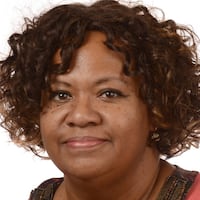Although the Braves retired the iconic Chief Noc-A-Homa on May 21, 1986, fans often reminisce about him, especially when the team isn’t doing so well. Even today, blogs and other fan sites blame the season on the curse of Noc-A-Homa.
Levi Walker Jr., of the Chippewa-Ottawa tribe, was the third and best-known of the people who played Chief Noc-A-Homa, who came with the team from Milwaukee in 1966. He had a tepee in the left-field stands at the old Atlanta-Fulton County Stadium from 1969 to 1986. When a Brave hit a home run, he would come out of the tepee and do a celebration dance.
When management removed his tepee in 1982 to add more seats, the Braves immediately lost 19 of 21 games, prompting a fan outcry that resulted in the tepee being brought back. They then recovered and won the National League West. He and the Braves parted company in 1986, after Walker said the club cited missed public appearances.
The Braves have had other mascots: Back in the mid-60s, there was Big Victor, a mechanical Indian; then there was Susie the Sweeper, Win-A-Lotta, companion to Noc-A-Homa; the Bleacher Creature, and Brother Francis, a non-official booster who led cheers in his monk’s habit.
But none had Noc-A-Homa’s staying power. At his left-field bleacher tepee, the chief was a familiar fixture at home games, leading the kids through war whoops, cheers and snake dances.
His image was predominantly featured as part of the team’s logo through the 1980s, when it was replaced by the tomahawk logo that the Braves and its minor league affiliates use today. Plans to bring back the Chief Noc-A-Homa image on the Braves’ batting-practice hats in 2013 met with widespread criticism. The Braves eventually backed away from those plans, sticking with the “script-A” image that has been the team’s primary cap logo since the late ’80s.
Using Native Americans as sports mascots has stirred controversy for decades. Professional sports holdouts besides Atlanta are the Cleveland Indians, Kansas City Chiefs, Chicago Blackhawks and Washington Redskins. Critics say it exploits a stereotype and furthers divisiveness in a nation that has too many clashes among races and ethnicities.
Despite the debate, Walker insisted that his people had no problem with his portrayal.
“I was a colorful individual in the game of baseball,” Walker said last year in an interview with Thursday Review, an online magazine. “I met four presidents, two kings, a sheik and his four wives, kids in the ghetto, ZZ Top, Three Dog Night, Led Zeppelin, Roy Clark, Jerry Reed, Tammy Wynette, Dolly Parton, Cab Calloway, Shirley Henderson, Olivia Newton-John, Loretta Lynn, Alabama and a number of other celebrities that came to a game.”
Walker has since moved to Michigan where he is a a tribal elder with the Little Traverse Bay Bands of Odawa Indians.
About the Author
The Latest
Featured

